Revolutionizing The Sharding Technology & The BlockChain Industry As A Whole
Introduction

The issue of “scalability” remains an almost impossible one to provide a viable solution to without compromising other aspects of the blockchain.
We don't have to be much stressed before cases involving frauds on the blockchain could be seen and this is majorly due to the low level of security & Illicit market activity.
In recent years, there have been various cases of lost funds, in Ether on the Ethereum blockchain. In the 7th month of 2017, a vulnerability in Parity led to the loss of about $30 million worth of Ethereum. However, there have been various strategies to mitigate or halt this misfortune, yet cases like this ensue.Just imagine, the Bitcoin blockchain is only able to process as low as 7 transactions per second (TPS), while the Ethereum blockchain processes approximately 15 transactions per second; although this seems higher, it is ridiculously small and slow compared to the number of users. However, there have been quite a number of proposed solutions in which some were actually implemented but none has been able to solve this problem completely. One of such solutions is “Sharding” which was first proposed by Zilliqa. Some other projects that utilize sharding technology include Quarkchain and Multivac, but did they do it right?
Although Zilliqa is the first public blockchain to be built on sharded architecture, it failed to address some critical issues like decentralization putting aside the original intent of blockchain. Also, their system is prone to attack due to its nature. However, these issues were noted and worked on by a team of individuals who brought forth Harmony.
Current Challenges With The Sharding Technology
Apart from the general challenges we already discussed in the introductory part, below are some challenges currently being faced by other PoS-based leading blockchains.
- State and Network Sharding
- Security Against 1% Shard Attack
- Cross-shard Communication Routing Optimization
See the table below...

Harmony-Open Consensus For 10 Billion People. Harmony for One and All.
Harmony is definitely a breakthrough in sharding technology as it helps solve major problems currently facing the blockchain industry. As stated in the whitepaper, Harmony is, of course, the next generation sharding-based blockchain that is fully scalable, provably secure, and energy-efficient.
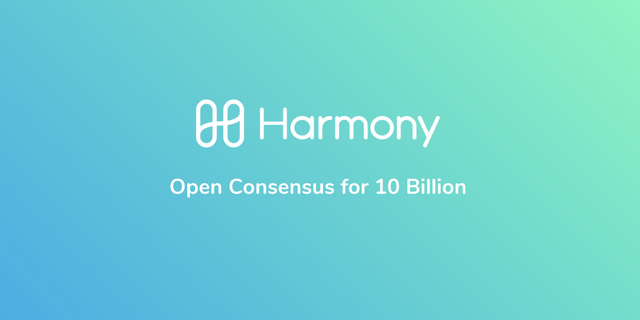.png)
Unlike other blockchains, Harmony allows up to 118,000 TPS and scales easily as its utilization becomes more intense. Its problem-solving approach is, of course, distinct as it applies 10x innovations at the layer level rather than searching for 10% improvements.
Features Of The Harmony Blockchain
It is Completely Scalable: Since not only the network communication and transaction validation but also the blockchain state are sharded, thus, the storage requirements are less restrictive.
Secure Sharding: The unpredictability, verifiability, scalability, and the unbiased state of the distributed randomness generation (DRG) process which the sharding process of Harmony employs it secure. This network is also resharded such that it prevents against adversaries of a slowly adaptive byzantine.
The Consensus Is Fast and Efficient: Harmony employs a BFT algorithm which is 100 xs faster than PBFT (Practical Byzantine Fault Tolerance), thus called Fast Byzantine Fault Tolerance (FBFT). As opposed to other sharding-based blockchains which use PoW (Proof of Stake), Harmony uses PoS (Proof of Stake) to which its energy-efficient properties can be attributed.
Adaptive-Threshold PoS: To scare away malicious stakers, the volume of total staking can be modified or adjusted. However, this is done in such a way that small stakers can still be a beneficiary.
Scalable Networking Infrastructure: This infrastructure allows the system to speed up the block broadcasting process both within shards and across it. Moreover, transactions across shards scale in a logarithmic manner with the number of shards such that you get insanely more transactions with every new shard.
Consistent Cross-Shard Transactions: Apart from the transactions within shards, harmony blockchain also supports transactions across them; there is direct communication. However, the consistency of these transactions is ensured by an atomic locking mechanism.
A Critical Look Into These Features & Their Benefits
Harmony Consensus Mechanism

The consensus algorithm or protocol is an indispensable part of any blockchain as its contribution to the security of such a system cannot be sidelined. A consensus algorithm is that part of a blockchain on which reliability of the network involving multiple unreliable nodes is built. However, there various kind of consensus with each having different ways of operation. We have the PoW, PoS, PoB, BFT, etc, of which we shall focus more on the latter because that’s what Harmony uses.
BFT stands for Byzantine Fault Tolerance, derived from the Byzantine Generals’ problem. This algorithm is designed such that information propagated across each node is correct and the system is able to reach a sufficient consensus in the face of malicious nodes. The PBFT- Practical Byzantine Fault Tolerance is a form of BFT which is commonly used. The issue with PBFT is its inability to handle a large amount of information, thus, lacks scalability. The system is also prone to Sybil attacks where multiple nodes are created by a single party keeping such a system in a compromised state.
However, Harmony consensus mechanism is an improvement on the limitations which come with PBFT. Unlike PBFT, this consensus has the ability to handle a large amount of information; 100x faster and can be said to be linearly scalable. Moreover, Harmony consensus adopts the use of PoS where validators are selected for block generation in accordance with their economic stake. Unlike PoW used in the Bitcoin blockchain, PoS requires low computing resources for its operation, hence, it is energy-efficient.
The ability of the consensus to speed up the information broadcasting process can also be attributed to RaptorQ fountain code which takes the security of the system into consideration.
Harmony Sharding
The main purpose of sharding is to spread or divide very large databases into smaller parts called shards. Data separated in this way are easily processed and managed.

The sharding process in harmony blockchain is a combination of both industrial and academic concepts. The idea of sharding was drawn industrially from Zilliqa network, which was the first sharding-based public blockchain that claimed throughput of 2,800 TPS. Although this network had a breakthrough in the number of transactions that can be processed per second, each node still has to hold the entire blockchain state to be able to process transactions.
However, to combat the storage bottleneck in the Zilliqa network, the state sharding solution was proffered from academia which is now incorporated into the Harmony blockchain. From this also, Harmony was able to learn how to prevent the corruption of a single shard over time. Eventually, a PoS-based full sharding scheme that’s linearly scalable and provably secure was designed.
Two other components of Harmony are the beacon chain and shard chains. The beacon chain generates the random number and accepts stakes, hence, serving as an identity register. On the other hand, the shards store separate blockchain states and process transactions.
Randomness In Sharding Process
Although there are various approaches that have been proposed for assigning nodes into shards, randomness-based sharding proves to be the most secured. For the fact that Harmony is concerned about security, it chooses to adopt this approach. Here, for the determination of the sharding responsibilities, a random number is mutually agreed upon which must be unpredictable, unbiaseable, verifiable and scalable.
Harmony is undoubtedly a combination of various solutions proffered by different projects and those from academic papers to create an all-in-one solution making it better than them. The main focus of the aforementioned solutions is on computing, sharing, proving and securing information that has to do with the generation of random numbers to be assigned to each node.
Time Intervals In Sharding
This can simply be referred to as Epochs on which the consensus and sharding process depends.

Sharding Based On PoS
A harmony ONE token underwrites every voting share subsequently granting its staker the ability to cast one vote. In any shard, security is to be ensured and this is achieved by assigning less than one-third of the voting shares. In addition to keeping the system secure, an adaptive mechanism has been developed by harmony.
Harmony plans on adopting EPoS, a system which allows the highest-ranked validators to be elected based on their stakes. In this way, top 1600 stakers fill the 1600 seats, hence, becoming the validators across shards and this happens at every new epoch.
Resharding
Despite the fact that this system implores a secured sharing scheme, it can still be prone to attacks. Harmony has been able to recognize three forms of possible attacks; Static-round adaptive, Slowly adaptive and Fully adaptive. To prevent the system from being corrupted, Harmony ensures the expulsion of validators that remove their stake at the end of an epoch. However, new voting shares will be given to staying validators for the next round of epoch and the new shares are unsequentially assigned to other shards with larger voting shares than the median of the whole network. Also for those shards that have smaller voting shares than the median, some constant numbers redistributed. When these happen, there is no need for the shards to reset at the end of every epoch; the computational requirements, thus, reduces depending on some factors which are related to staying validators.
The above description is, of course, in line with the idea of high stakeholders ensuring the optimal functioning of the system, and maintaining and further increasing their stakes at subsequent epochs and development of new network.
Harmony Beacon Chain
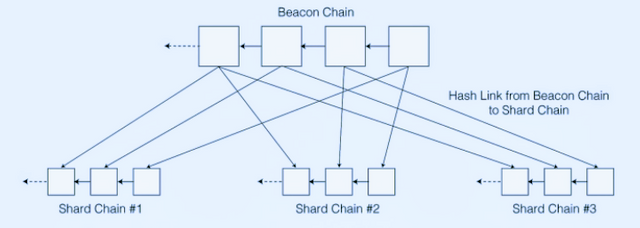
The beacon chain is one of the unique or distinguishing factors of Harmony. As introduced earlier on, it is one of the two types of chain in Harmony. It is able to process transactions just like the standard shard chain, however, it does have other two important functions highlighted below.
It helps to generate the random numbers which affect how validators are assigned into shards
It also accepts prospective validators' stakes
The validators here are determined in such a way that is similar to the determination of validators of other shard chains.
Eventually, malicious actors are made to forcefully corrupt their targeted shard chain and also the beacon chain. When this happens, other nodes are influenced such that they would believe this new fake block has met the randomly determined requirements preset by the beacon chain. If there had to be independent communication between each shard and the rest, there would be a great computational load, however, this can be decreased by the central beacon chain when used as a relay.
Harmony's State Sharding
The state sharding here is quite different from that used in other state-sharding blockchains since each shard chain has its own account state and all existing tokens are spread across all shards.
Not only a user but also smart contract are handled differently in harmony sharding. This way, the smart contracts can only be contained in the shard it's created. In the case whereby a decentralized application, otherwise known as Dapp, requires more throughput than can be handled by a single shard, a Dapp developer has been built by Harmony which can create multiple instances of the same smart contract in various shards letting a subset of the incoming traffic to be handled by each instance. A point worth noting is that these instances have an uncommon state, nevertheless, there is communication among them.
Pangaea - A Blockchain Experimental Zone Turned To A Massive Success
Pangaea is an experimental zone for thousands of people to interact with the Harmony network, test the limitations of our technology and have lots of fun while earning rewards. Pangaea is created purely for experimental purposes. It will have its own currency for playing and bookkeeping.
It’s the first live experiment - showcasing great prospect for participation in the development of the Harmony network. Within the first 24 hours the initiative had the following:
- 138 Nodes up & running already
- 1283 Signups
- 77 Countries
- 356 Keys Downloaded
The goals of Pangaea:
- Test Harmony’s upcoming core protocol milestones and updates such as staking smart contracts and resharding, on a network of all external nodes
- Set-up and onboard a vast number of nodes, ready to jump into the mainnet, through collective knowledge building and competitions
- Identify and award community members who help secure the Harmony network and are willing to go the extra mile by taking on leadership roles in our validator community
From Cateredcontent Event Page
Summary Of The Harmony Benefits

Source
The Harmony blockchain is to projects/individuals in the following way...
The network is provably secure and this is made possible by different mechanism it adopts.
Because the Harmony system is highly scalable, it can accommodate a large userbase.
Performance of this system is not affected as it grows.It is able to process a large number of transactions; up to 118k per second.
It does not consume a considerable amount of electricity.
It is fully decentralized
Voting power is weighted by an effective stake and this is an added security
Applications Of The Blockchain
- Gaming e.g CryptoKitties
- Large-scale economies
- High TPS platforms
- Entertainment
- Healthcare
- Financial services
- Enterprise infrastructure
- Supply chain
Use Cases
1. CryptoKitties
It should be borne in mind that CrypyoKitties is a popular Ethereum-based and a digital game which allows players to breed cartoon kittens using Eth. Players can also trade among themselves.
Over time, the ethereum network started getting clogged up and transactions are delayed resulting in a large number of transactions not to be processed. This is as a result of the inability of the Ethereum blockchain to scale well.Take note of two things here; transactions are being delayed and players of this game do not enjoy it any longer because it takes more time to breed a kitten, so, the game developer had to increase their birthing fee. It's getting expensive!
However, if the developers decide to move such game to the Harmony blockchain, there won't be such experience as described above. The system, despite clogging up, still maintains its integrity in term of performance; transactions would be processed as fast as possible, the birthing fee would be low as kittens will be bred faster, and of course, players have to spend less money and subsequently enjoy their game.
2. High TPS Platforms
Let's assume Mr. A has a plan of starting a blockchain-based platform that handles and processes a large amount of data with maximum security.
While he and his team start creating a working strategy for their new business, they make intense research to know the blockchain network that best suits their requirement. The team pens down possible blockchain that can be utilized with their advantages and disadvantages. Of course, what they have at hand seems unsatisfying and they are already having a second thought.Due to the persistence of a few of the team members, they come across Harmony and compare it with what they already have. Fortunately, they find out that it has all they want and decide to make use of it.
3. Insurance Company
Jessica, a business mogul who owns an insurance company.
Her insurance company covers homes and properties-related damages. As her company grows with time, it gets to a point that they start dealing with increased amounts of data. Moreover, censors are collected for the determination of their charges.The authenticity of the data so collected from these sensors has to be securely verified. From here, the issue of which blockchain platform to use comes up; either Ethereum or Harmony.
Critical research is made and after juxtaposing the two, they find out that Harmony is by far a better option; maximum security and estimation of 118k TPS are what they will enjoy.
4. Supply Chain
Alice owns a manufacturing industry that supplies and distributes their final products to clients in various destination. She has been so bothered about the numerous complaints from her clients about the quantity of goods supplied not being what they request for.
However, she has tried so many strategy to make sure she protects her integrity. Most times, she needs to deliver additional goods. This is getting too much to the extent that the company is running at lost.She tells her friend, Mark, who is a blockchain enthusiast about her plight. Mark is well-informed and has had about Harmony, so, he told her about it. The transparency and the maximum security of Harmony captivates her and she ventures into it. Now, she enjoys all the benefits of Harmony and doesn't receive any complaints from clients; She's able to monitor how goods are being delivered without any problem.
Harmony ONE Token




The harmony ONE token is a native token of the harmony blockchain and serves a number of function...
As a means of staking to become a validator in order to earn block rewards and transaction fees in return
As a means of which transaction fees, gas and storage fees are paid
As a means of which on-chain governance of the protocol is voted for
This token has benn listed on major exchanges like Binance, Bilaxy, Binance De, it, a, etc.
Token Economics
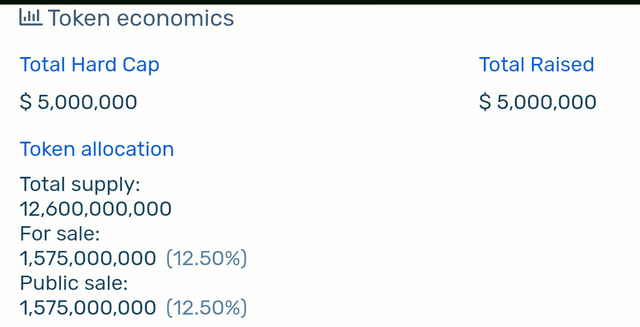
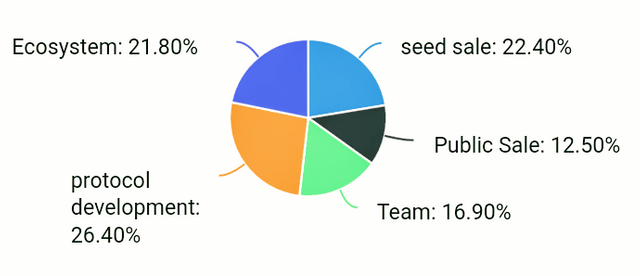
The Team
The Harmony team include highly-skilled individuals wise enough to have developed such an amazing blockchain that will undoubtedly disrupt the blockchain industry. a great thanks to the team!
 source
source
Roadmap
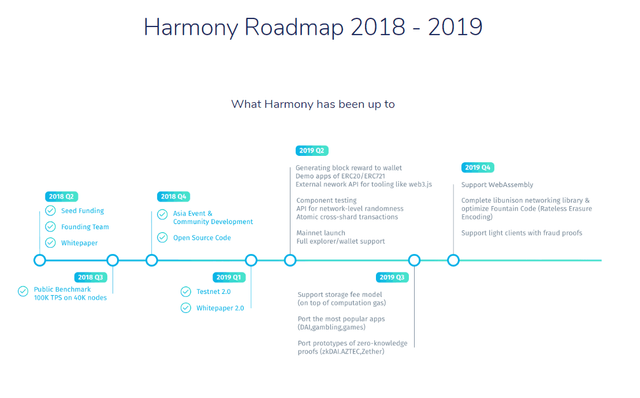
Conclusion
The Harmony project is a very promising one which combines various strategy in filling the loopholes currently in the blockchain industry. It is built with the ability to handle a capacity of not less than 10 billion users; I'm very sure that out of the many Blockchains available, none can handle such capacity without interfering with the performance of their network.
It is able to execute up to 118k TPS, of which none of the currently available blockchains can handle. The transaction fee of processing transactions is relatively low, and most importantly the network is the safest in term of security.
It would be of help to anyone looking to enjoy the combination of these features. An all-in-one blockchain is what I would call it any day!
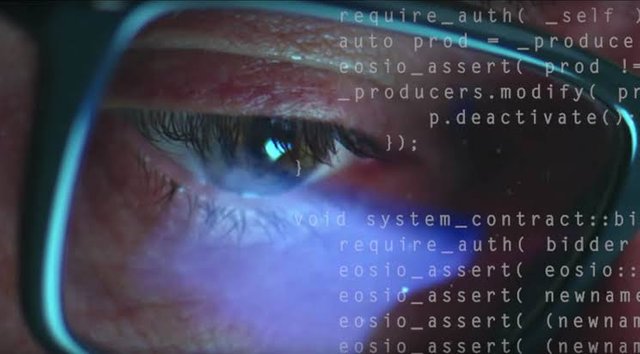.jpeg)
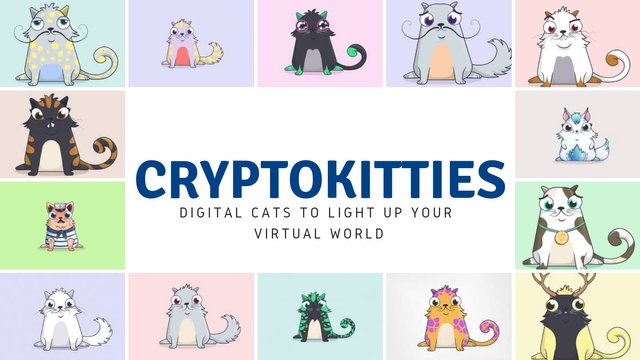

.jpeg)

Congratulations @acheever! You have completed the following achievement on the Steem blockchain and have been rewarded with new badge(s) :
You can view your badges on your Steem Board and compare to others on the Steem Ranking
If you no longer want to receive notifications, reply to this comment with the word
STOPVote for @Steemitboard as a witness to get one more award and increased upvotes!
Hey Garlam - Head of Marketing at Harmony here - really love the article and was wondering if you'd be open to more work as one of our writers!
Message me on telegram - @garlamw (and yes it is the real me - check my twitter to verify my telegram id - https://twitter.com/GarlamWon)
Congratulations @acheever! You received a personal award!
You can view your badges on your Steem Board and compare to others on the Steem Ranking
Vote for @Steemitboard as a witness to get one more award and increased upvotes!